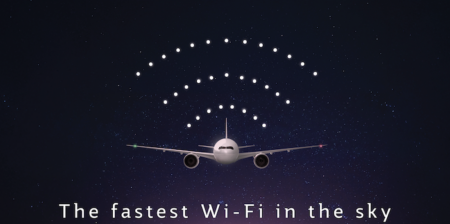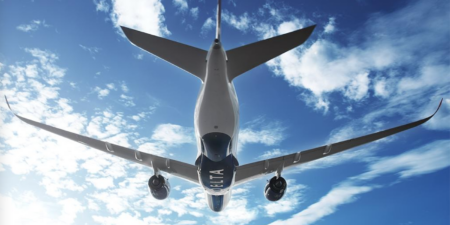Wi-fi, mobile devices and personal electronic devices (PEDs) have forever altered the air travel experience. Today’s travelers are increasingly self-reliant, with many opting for kiosks instead of ticket counters, and they are more connected than ever, with 97% of them carrying a mobile device, according to SITA. To keep pace with passengers’ evolving preferences and mobile behaviors, many airlines have responded with self-service features and technology roll-outs.
This proliferation of technology has raised questions about which factors are more influential in the sales of products in the skies: crew or technology?
At GuestLogix, we see this industry-wide shift as an opportunity for both. Savvy airlines have the ability to enhance traditional crew engagement models through technology. Devices like tablets and mobile point-of-sale (POS) sleeves can help cabin crews deepen their engagement with passengers to drive revenue and enhance the passenger experience.
Technology-enabled travel
Until recently, crew technology has been disparate, with several devices responsible for the onboard experience, including transaction processing, inventory management, etc.
Now, today’s devices are helping to streamline the retailing process and provide new levels of convenience for crew members. Larger screens support the visual display of products and for more detailed product information to be presented, enabling crew members to operate airlines’ “stores in the skies,” leading to more ancillary revenue opportunities. We’re already seeing this trend take off, with forward-thinking airlines like KLM and British Airways providing mobile devices to their inflight crews.
The underlying interface of today’s tablets (regardless of manufacturer) also enable crew members to go beyond transactions and conduct more activities directly on the device. For example, through our recent partnership with Comply365, we’re helping crew members keep track of passenger flight lists, complete easy-to-access documents, forms and procedures, and streamline airlines’ overall compliance reports and audit trails all via tablets.
Mobile devices in the hands of the crew can also become a gateway to the long-term goal of personalized onboard experiences for passengers. By integrating frequent flyer program data a crew member completing a passenger’s purchase, for example, can quickly make note of the passenger’s loyalty-program membership and deliver a personalized message (e.g., “Thanks for being a Gold member”). Additional technology partnerships are supporting social media integration and other non-retail initiatives into the travel experience.
How can it play out?
Clearly, the stakes are high for airlines to meet the needs of a mobile-first passenger base with a technology-driven travel experience and successful business model for ancillary revenue. And since technology rarely stands still, the underlying platform needs to be scalable and flexible, easily updated and modernized to accommodate upgrades and improvements.
What’s important to remember is that the cabin crew will always be the face of the airline, so to speak, and no technology can replace the all-important human interaction that occurs in the air. Evolving standards for ‘crew engagement’ must incorporate technology in ways that improve the lives and jobs of crew members and help them create satisfying experiences for their passengers.
Andy Archer is head of global sales at GuestLogix.




